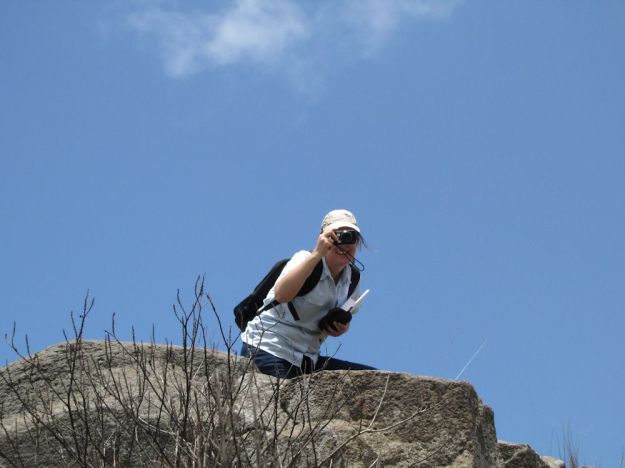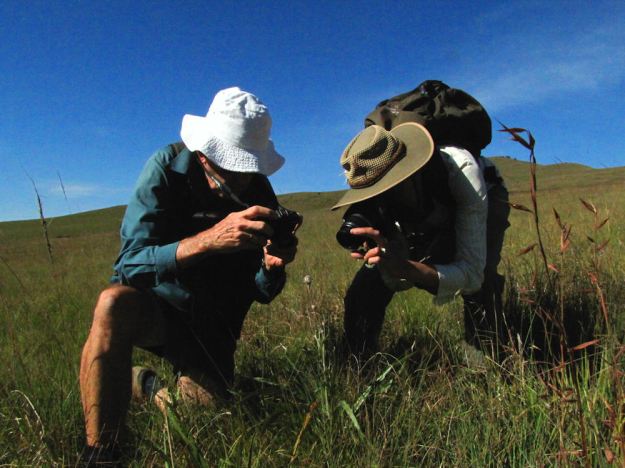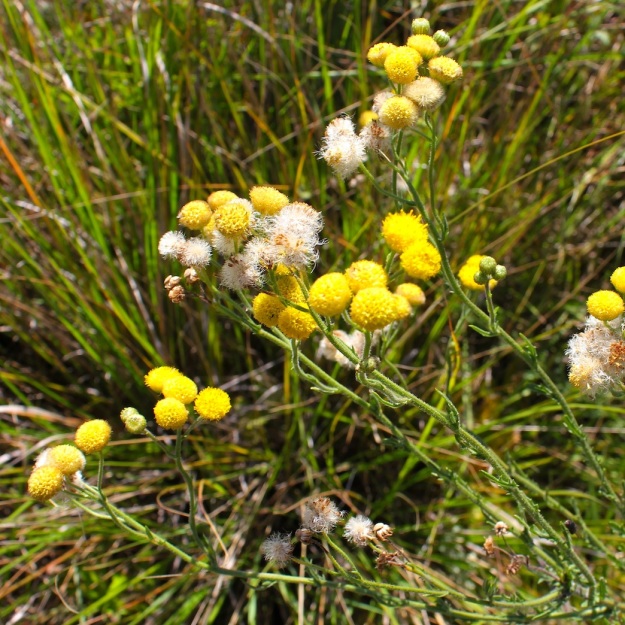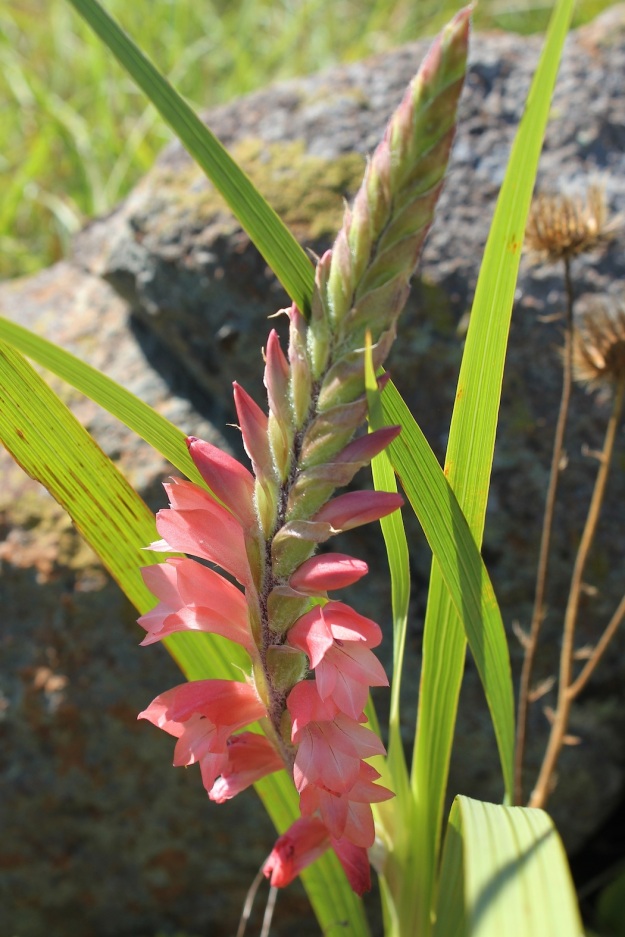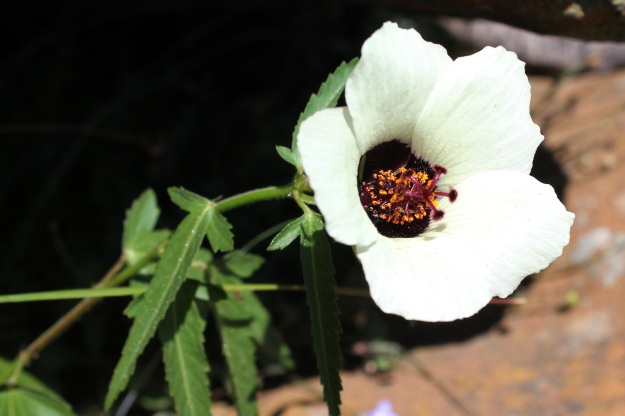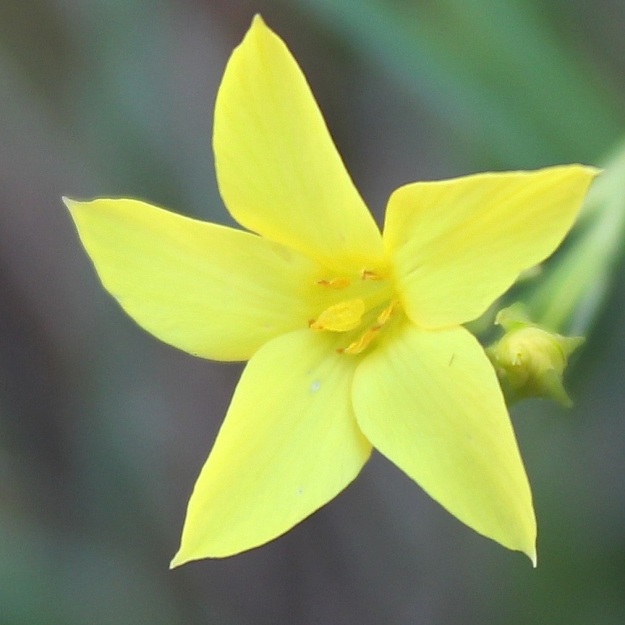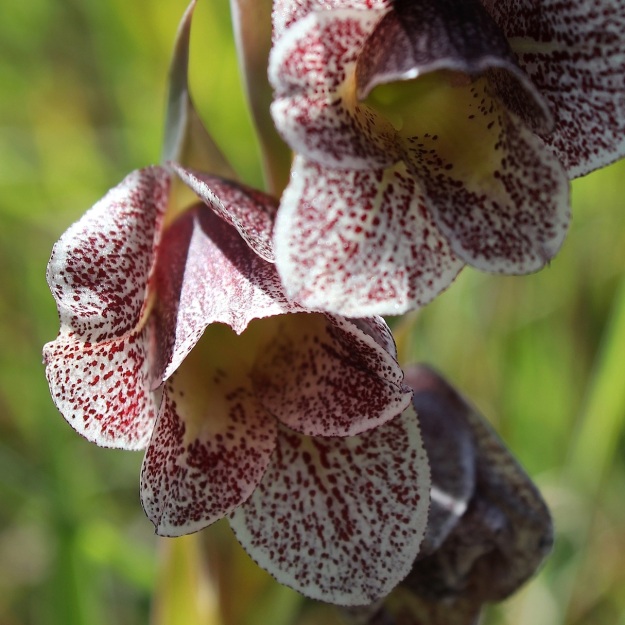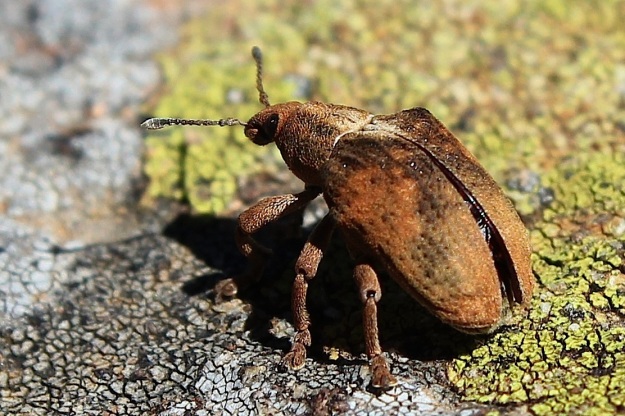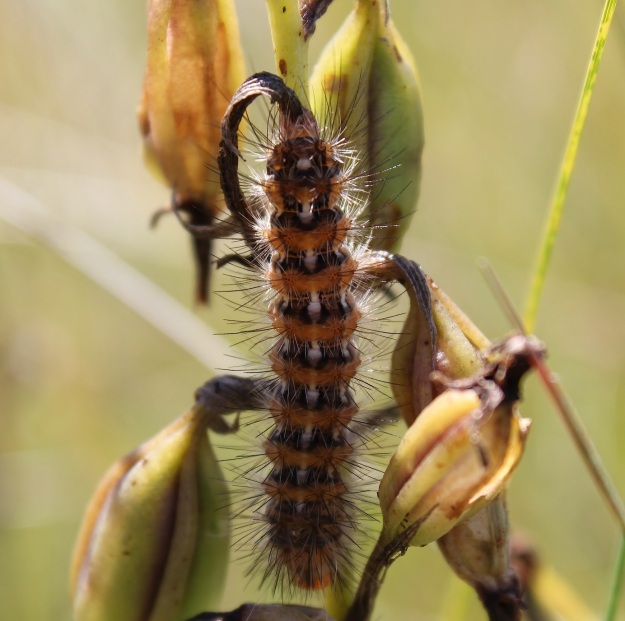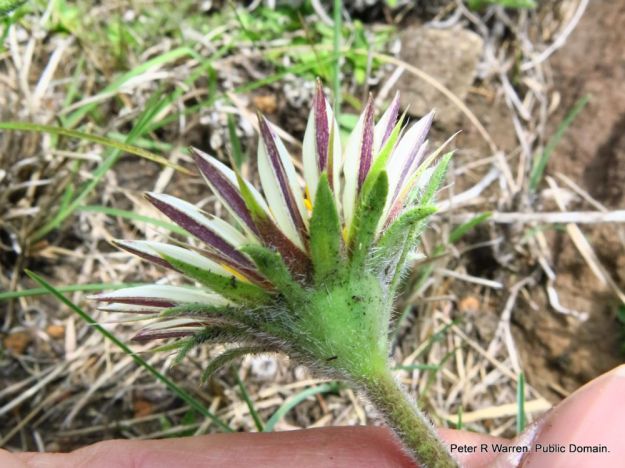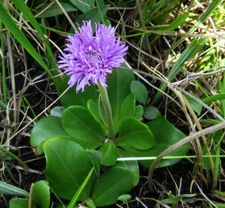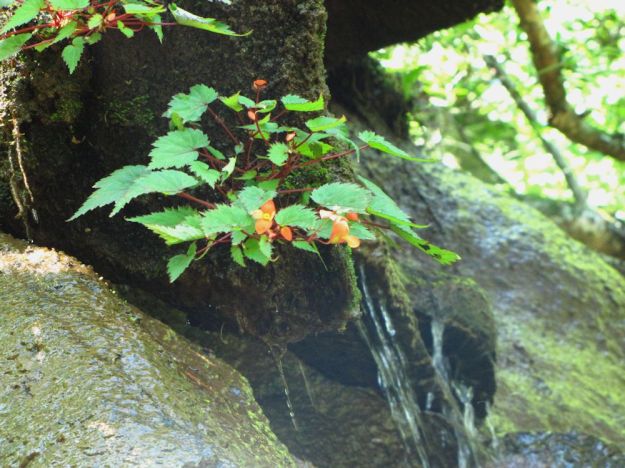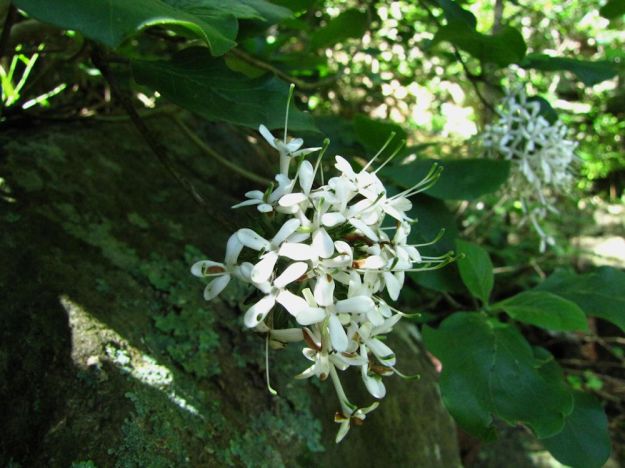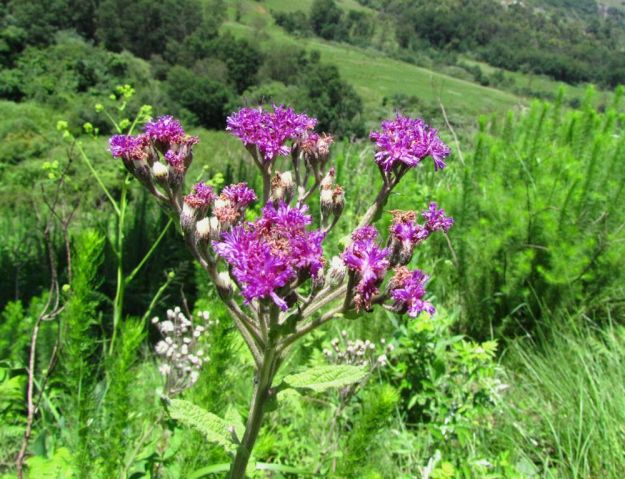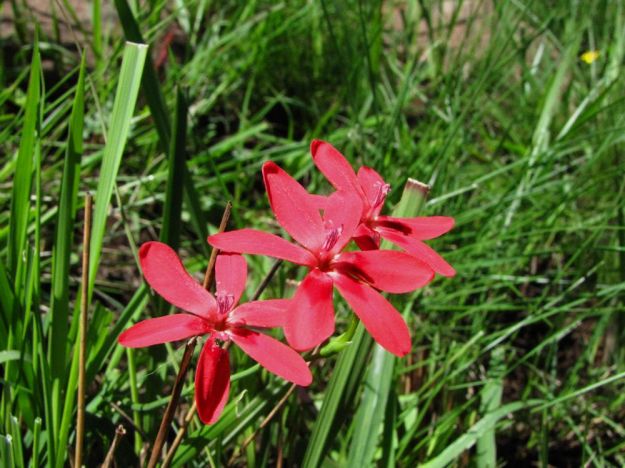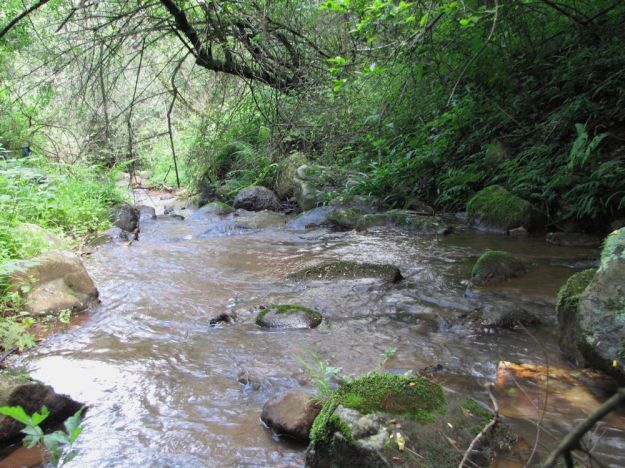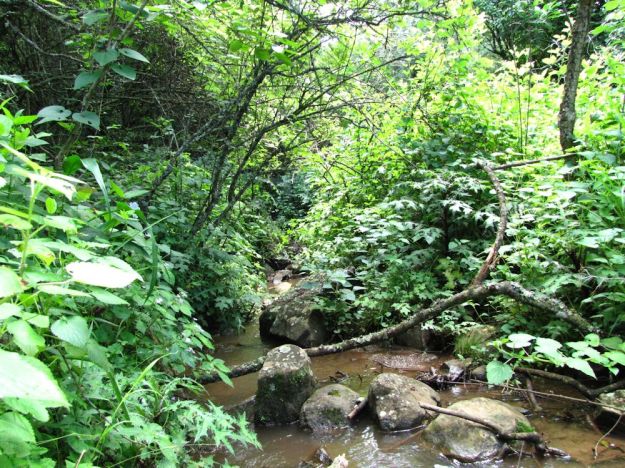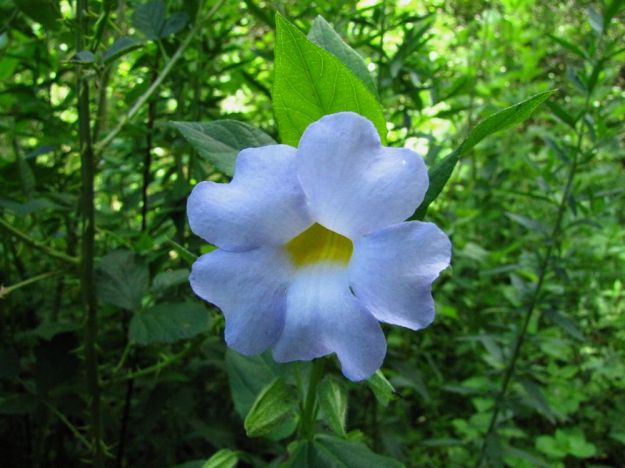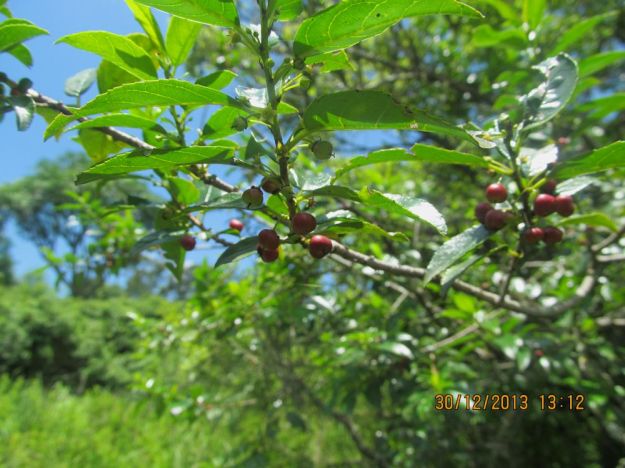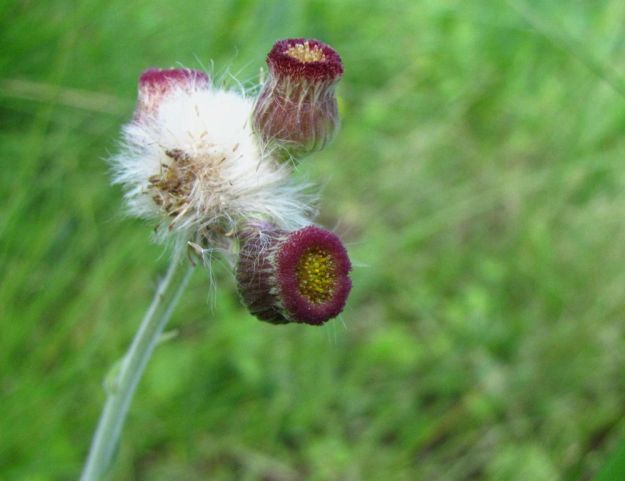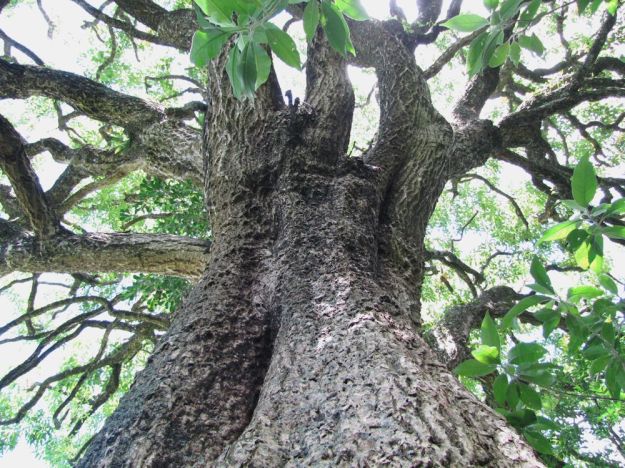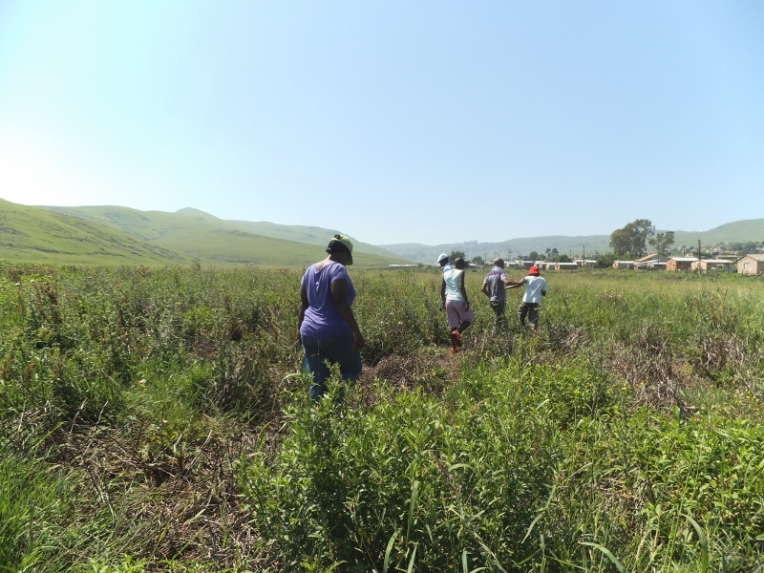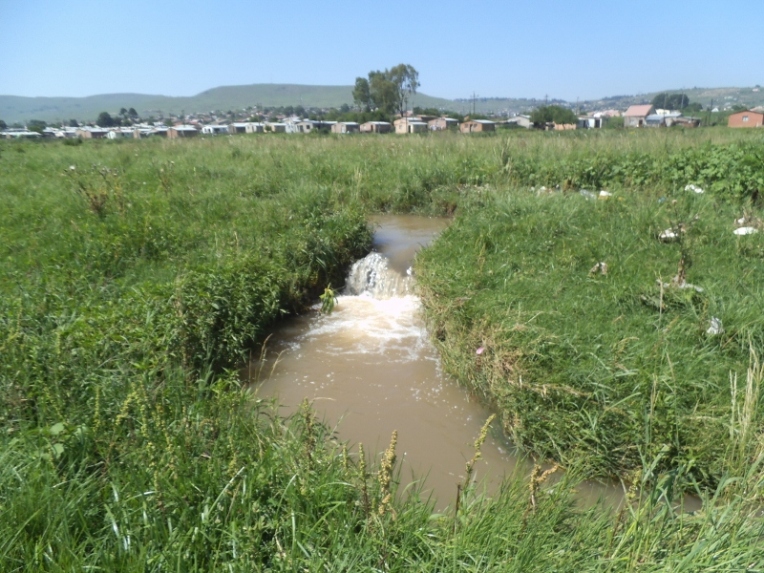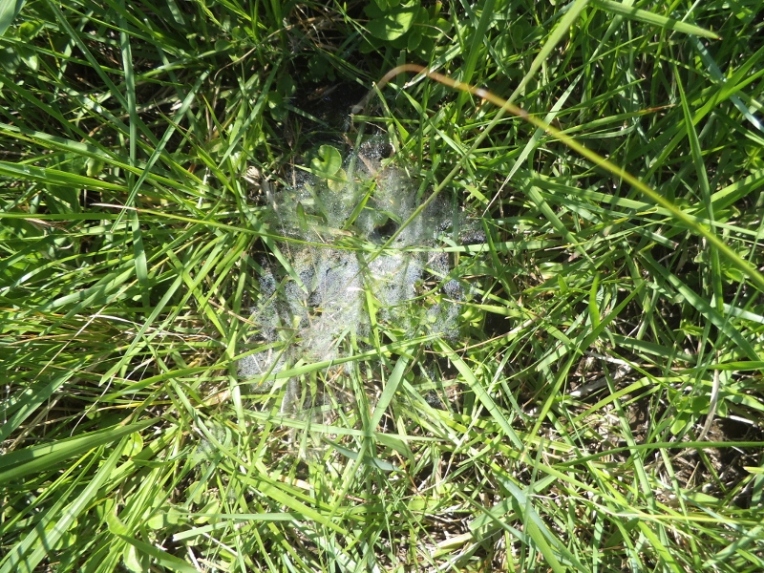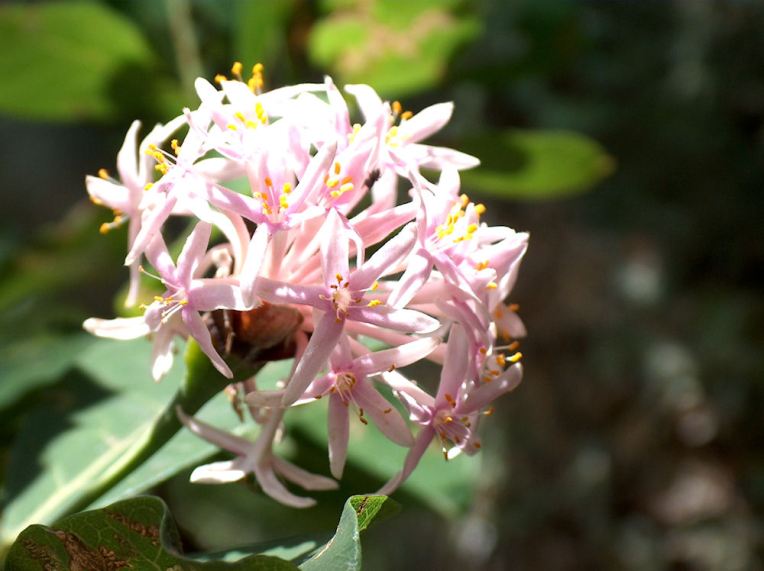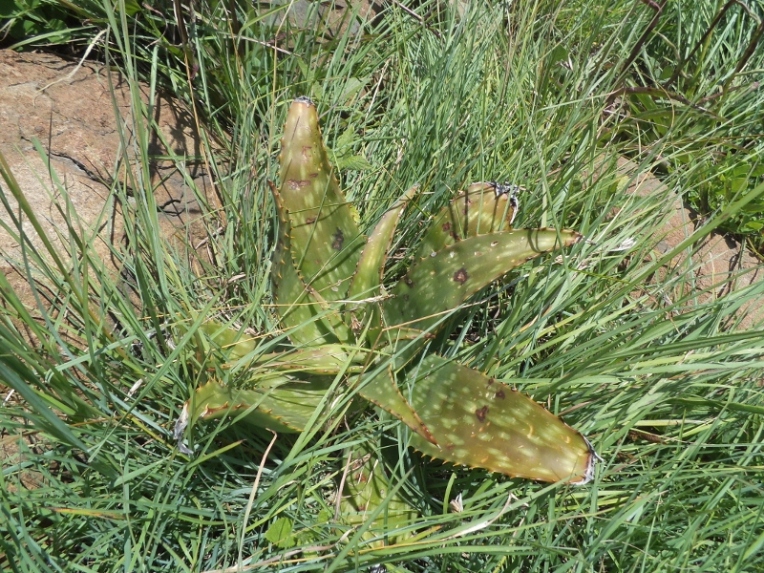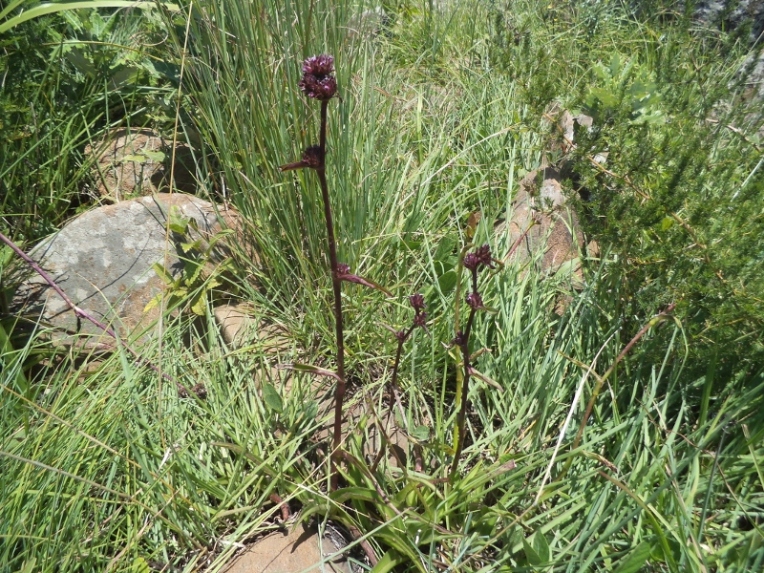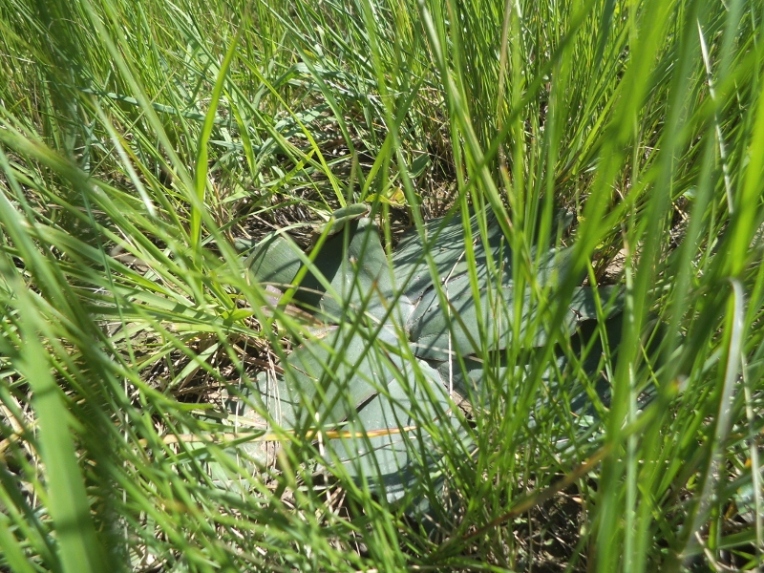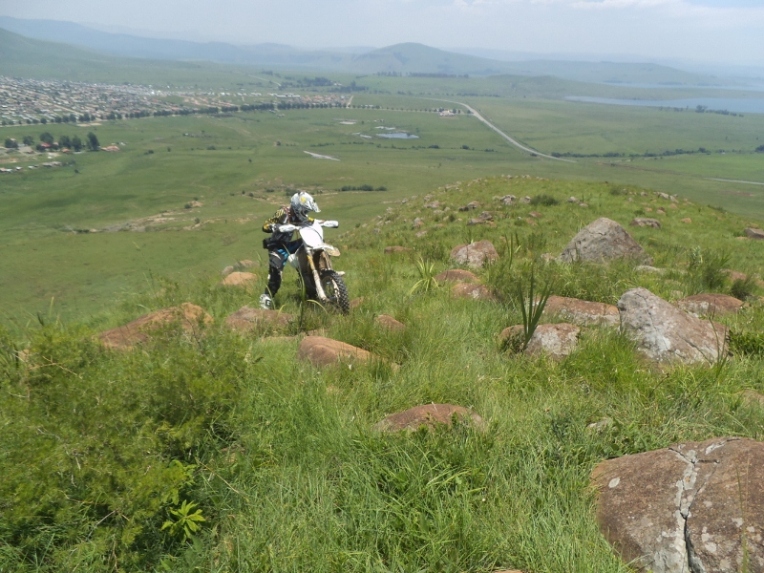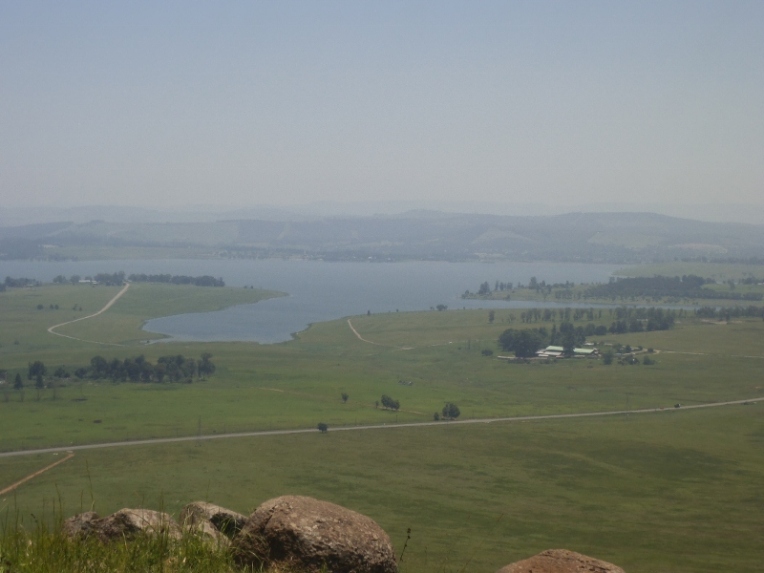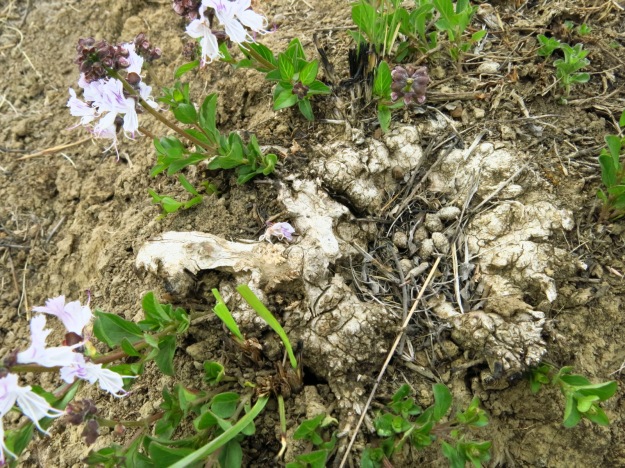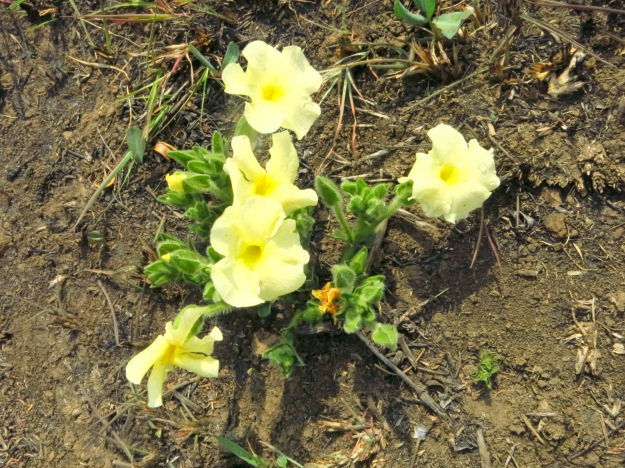Ayanda Lipheyana and Lindiwe Mkhize represented Mpophomeni Conservation Group at the Annual CREW (Custodians of Rare and Endangered Wildplants) Workshop in Eshowe from 30 August to 2 September along with other Midlands CREW members, Peter Warren, Alex March and Nikki Brighton.
Ayanda reports: The workshop was attended by CREW groups from different provinces and university students from UKZN, UniZulu and Limpopo. It was very exciting and wonderful to meet all these new people who care about plants. The speakers were experienced and the presentations interesting. The first presentation was on taxonomy based on Kniphofia identification and the use of keys to find the species of the family. Professor Braam van Wyk presented on the evolution of the Maputaland plants, talked about BioGeography and suggested reasons like temperature and underlying rock for the richness of species here – there are 230 endemic plants in the area. In another presentation Braam talked about Grassland Ecology which was so interesting.
Livhu Nkhuna from the Millenium Seedbank Project talked about seed collection and how we have to keep the seed safely so when plants are extinct in the wild they will be propagated. Many CREW groups reported back on their activities for the year, the Midlands CREW (very new group) has focussed on inspiring and educating people to make the group stronger. We learnt about ferns from Neil Crouch, geology from Mike Watkeys, the importance of Herbarium specimens with Mkipheni Mgwenya, Alien species with Reshnee Lalla and the Pondoland paraecologist project from Sinegugu Zukulu.
We had a field trip to the Dlinza forest where we saw blue duiker and learnt so much about the trees and plants. The Philenoptera (Milettia) sutherlandia trees were very impressive and the Strangler Figs. The Boardwalk was great, with an amazing view from above the canopy. Albizia was flowering below us. We saw hornbills, sunbirds, white eared barbet, grey Cuckooshrike and many more birds in the trees.
We also visited grasslands and forest at Entumeni Reserve. It was a great experience.
Lindiwe commented: “I am so very happy to have this opportunity. The CREW information was breathtaking for me, now I understand what CREW is all about. The speakers from all walks of life gave us so much information and the fieldtrips to the forest were much fun. I made unique friends from other places. Everything was super amazing!”
Previously, they had participated in CREW fieldtrips in the Midlands.
The Midlands CREW headed out to Impendle Nature Reserve on 23 March to find some flowers and wander in the grasslands. Most of us had never visited before, so we were lucky that CREW stalwarts, Christeen Grant, Barbara and David Clulow came along to show us the way and share their knowledge.
The reserve centre lies 11 km due south of Impendle town, and about 50 km west of Pietermaritzburg. It took about an hour to get there from Howick. The terrain is undulating, steep and rocky at the highest points, and dissected with small river drainage lines that fall over a minor escarpment as they join the Umkomaas River, which forms much of the site’s southern boundary. Altitude range is 935–1 586 m. The site is predominantly grassland (about 2 000 ha). Most of this is Highland Sourveld, with some Southern Tall Grassveld remaining. In its pristine state, this grassland should be dominated by Red Grass Themeda triandra, but the scarcity of this grass indicates that the site has been man-modified in the past – we saw plenty of Aristida and Paspalum.
We headed up the hill from the carpark. There are no paths, so we simply waded through the grass, finding treasures as we went.
The first discovery was Satyrium macrophyllum – shown off beautifully against the dry gold grass
then Alectra sessiliflora, which is flowering profusely in the Midlands this year.
We stopped to photograph everything! Christeen took all the fabulous flower photos in this post.
We saw Disa fragrans, Helichtrysum adenocarpum, Monocymbium ceresiliforme, Habernaria lithophila, Helichrysum glomeratum, Becium obovatum subsp. obovatum var. obovatum.
Eucomis autumnalis, Veronia natalensis, Searsia (Rhus) discolour, Vigna vexillata, Pachycarpus sp (not in flower), Lobelia erinus, Schistostephium crataegifolium,
Satyrium longicauda (not in flower), Wahlenbergia cuspidata, Haberneria dregeana,
Barleria monticola, Sebaea sedoides (isivumelwane esikhulu), Hermannia gerradii – two plants spreading across the earth below the rocky area which was a first for David and Christeen and cause for much delight. Lobelia erinus
Leonotis intermedia, Striga elegans, Gladiolus sericeovillosus – this was Lindiwe’s favourite flower of the day.
Lindiwe also loved the aloes that reminded her of Mpophomeni.
Some things we really puzzled over, but half the fun is looking up, discussing and finding the answer.
This Senecio had us stumped. Peter thought it might be Senecio dreageana which is listed in the red Data book as vulnerable. He has posted it on iSpot – for assistance from other amateur Botanists – have a look: iSpot record If it is, it is pretty special – “It probably occurs at less than 10 locations, based on herbarium records and habitat maps. At least 67% of its grassland habitat has been transformed, and all remaining subpopulations are on small habitat fragments that are subject to ongoing degradation as a result of frequent fires, overgrazing, subsistence agriculture and the effects of fragmentation. Habitat loss has taken place over a period longer than three generations. Data on population size and trends are urgently needed.” We are uncertain and await specialist identification – it is so easy for us to be over enthusiastic and misidentify things, so we want to make sure.
Crassula pellucida, Kniphofia laxiflora (not flowering), Diospyrus lycoides (not flowering), Scolopia, Berkheya multijuga, Calpurnia sericia (not flowering), Kalenchoe persiflora, Hibiscus trionum,
Merwilla plumbea (not flowering), Cussonia paniculata (not flowering), Argylobium magenta (not flowering), Rhabdiosella calycina, Canthium mundianum (not flowering – stunted amongst rocks), Buchnera simplex,
Ziziphus (not flowering – stunted amongst rocks), Pelargonium luridum (not flowering), Ortholobium polystictum, Asparagus cooperi, Watsonia socium (a few still in flower), Aloe maculata (not flowering), Pimpinella caffra,
Dicoma anomala
Ayanda simply loved the wide opens spaces, the quiet and the views.
We couldn’t identify: Small yellow tubular flower with 5 fused petals. Fine 10cm long stem from ground. Tiny bracts. Anyone have any ideas?
Helichrysum cephaloideum, Zaluzianskia microsiphon, Gladiolus ecklonii,
We saw a couple of reed buck, lots of butterflies, found a porcupine quill and fell into a few aardvark holes. This tiny weevil was interesting
Greyia sutherlandii, Grewia occidentalis, Halleria lucida, Scolopia mundii, Schizoglossum bidens (with fruit), Dicomis autumnalis, Eulophia sp (seed pods and caterpillar)
We were very excited to find Bowiea volubilis amongst the Dolerite rocks on the ridge as it is on out Target Species list of Threatened species to look out for. The Red Data list tell us that it is under severe threat from harvesting for the medicinal plant trade.
We also thought we spotted Anenome fanninii (another from our list) in the valley. Impendle holds one of the largest populations of Blue Swallow remaining in South Africa, however we only visited the Northern slopes, not the area where they nest.
The reserve consists of a series of farms that were first settled by colonists over 100 years ago. Most of the land was devoted to cattle grazing, but small areas have been used for crops. The farms were purchased in the late 1970s by the government for the purpose of consolidating the old KwaZulu homeland. They have been uninhabited since 1980. The value of this Trust Land to conservation was recognised in 1983 with the proposal to formally convert the area into Impendle Nature Reserve. Ezemvelo KZN Wildlife has been the management authority for the reserve since 1994.
Should you wish to visit, you need to make arrangements before you go or you may find the gate locked. Call Michael Ngubo, 072 542 3049 or Nicholas Mndaweni, 082 518 8219. The Officer in Charge is Mbuyiselo Gxashi – his email address is gxashim@kznwildlife.com
The second Midlands CREW (Custodians of Rare and Endangered Wildflowers) fieldtrip for the 2013 season took place on Saturday 9 November at Lake Lyndhurst in Fort Nottingham. There were lots of flowers on the road verges. 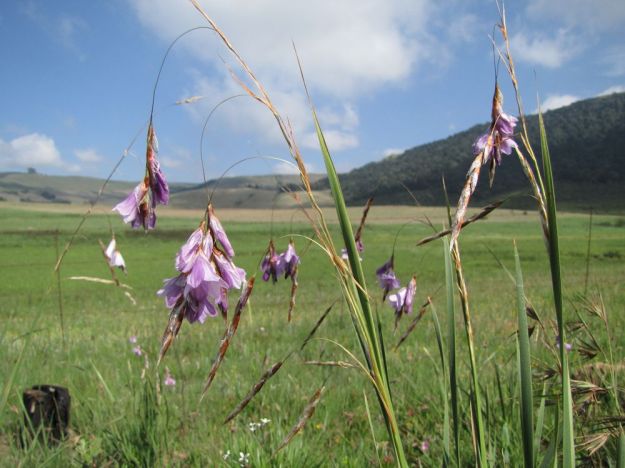 After meeting at Els Amics in the village, we headed through New Forest where the uMngeni river spills down from uMngeni Vlei, up to Lake Lyndhurst.
After meeting at Els Amics in the village, we headed through New Forest where the uMngeni river spills down from uMngeni Vlei, up to Lake Lyndhurst. 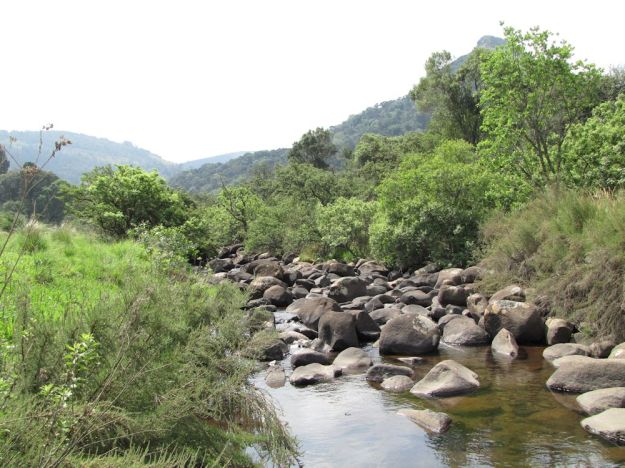 Evert joined us having ridden his bike through Ivanhoe from the Dargle side.
Evert joined us having ridden his bike through Ivanhoe from the Dargle side. 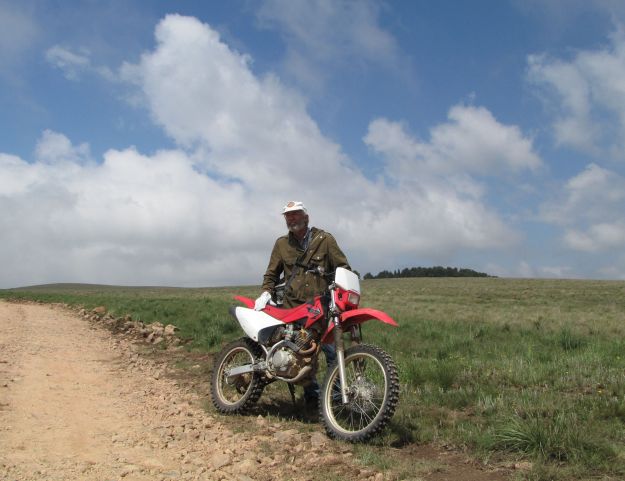 Ayanda and Nkanyiso admired the wetland and the views.
Ayanda and Nkanyiso admired the wetland and the views. 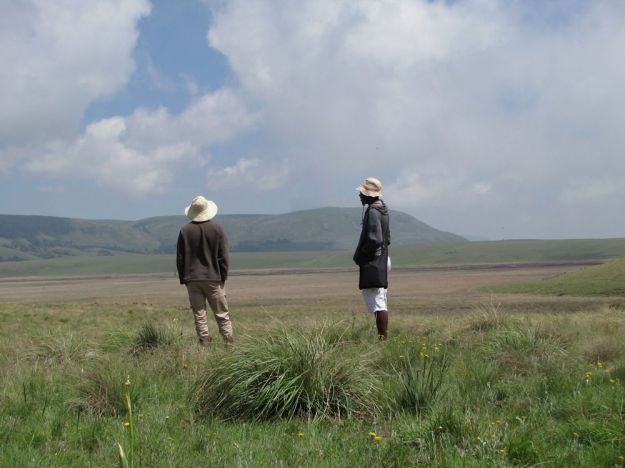 The plateau was covered with Festuca costata – a grass usually found at higher altitudes. It appears to be moving down and increasing in places not previously abundant. The vegetation was typical of Mooi river Highland Grassland – part of the Highland Sourveld.
The plateau was covered with Festuca costata – a grass usually found at higher altitudes. It appears to be moving down and increasing in places not previously abundant. The vegetation was typical of Mooi river Highland Grassland – part of the Highland Sourveld. 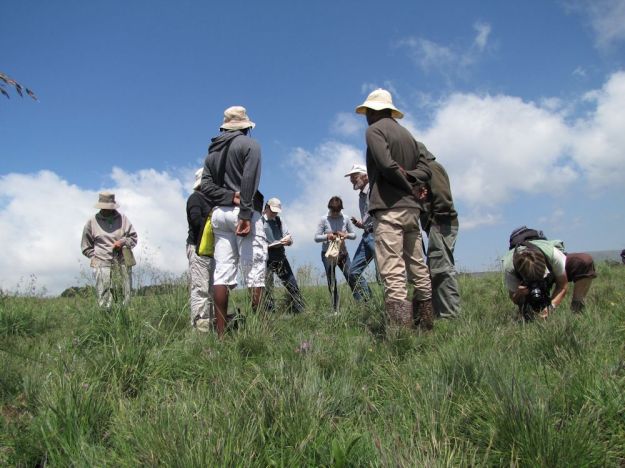 Didn’t take long before the photographers were down on their knees getting up close to little floral treasures.
Didn’t take long before the photographers were down on their knees getting up close to little floral treasures. 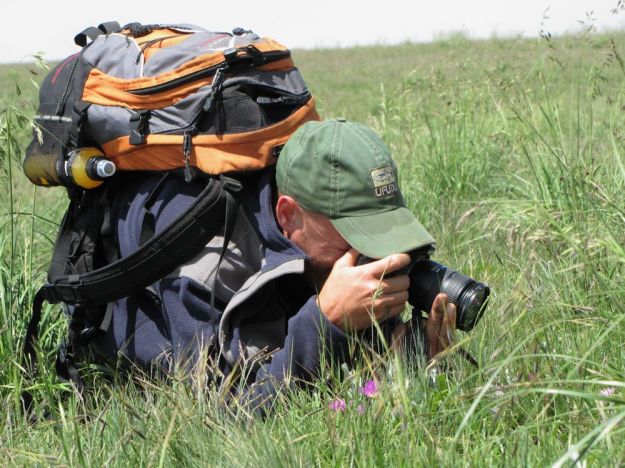 Experts and amateur botanists decided to head towards a rocky outcrop to see what they could find. Hypoxis filiformis, Graderia scabra, Eriosema distinctum, Helichrysum aureonitis which is also used as imphepho although Helichrysum cynosum is the more classic imphepho species.
Experts and amateur botanists decided to head towards a rocky outcrop to see what they could find. Hypoxis filiformis, Graderia scabra, Eriosema distinctum, Helichrysum aureonitis which is also used as imphepho although Helichrysum cynosum is the more classic imphepho species.  We were amazed at all the Delopspermum (probably sutherlandii). Eve commented that she didn’t really expect to find them here – they seemed to belong in the Karoo.
We were amazed at all the Delopspermum (probably sutherlandii). Eve commented that she didn’t really expect to find them here – they seemed to belong in the Karoo. 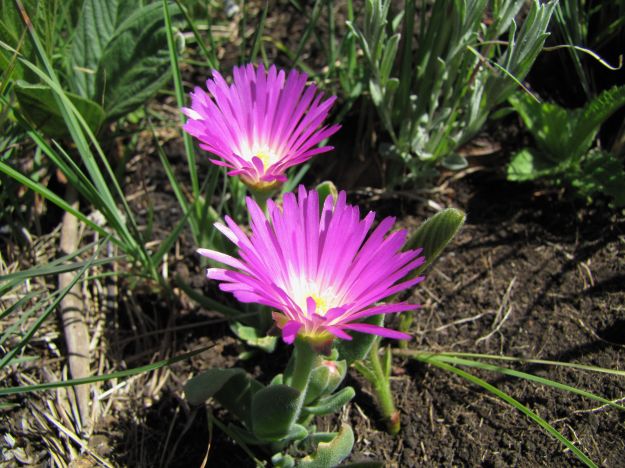 There was lots and lots of yellow Morea flowering. Is it alticola? graminicola? Most likely spathulata. Interesting we found it was far more abundant in the areas where there were cattle and not apparent in the area cattle were excluded from.
There was lots and lots of yellow Morea flowering. Is it alticola? graminicola? Most likely spathulata. Interesting we found it was far more abundant in the areas where there were cattle and not apparent in the area cattle were excluded from. 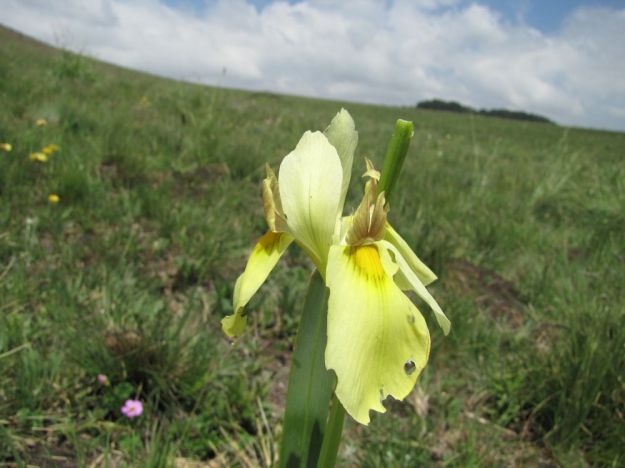 Senecio erubescens – very sticky, Gerbera kraussia (sometimes called ambigua)
Senecio erubescens – very sticky, Gerbera kraussia (sometimes called ambigua) 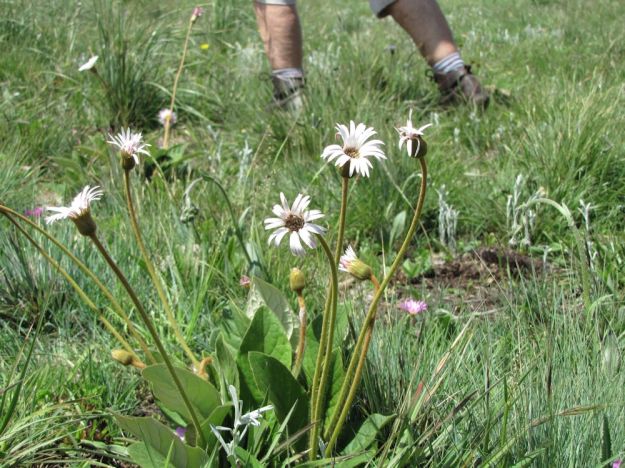 Eriosema kraussianum, Schizoglossum flavum,
Eriosema kraussianum, Schizoglossum flavum, 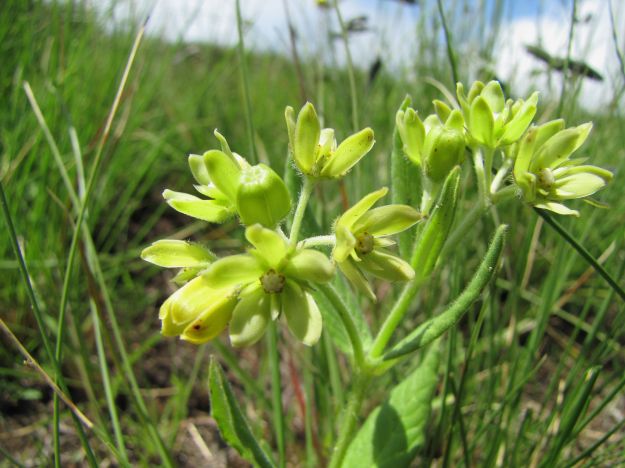 Buchnera simplex – gorgeous deep blue, Gladiolus parvula had most of us fooled as we thought it was a Dierama
Buchnera simplex – gorgeous deep blue, Gladiolus parvula had most of us fooled as we thought it was a Dierama 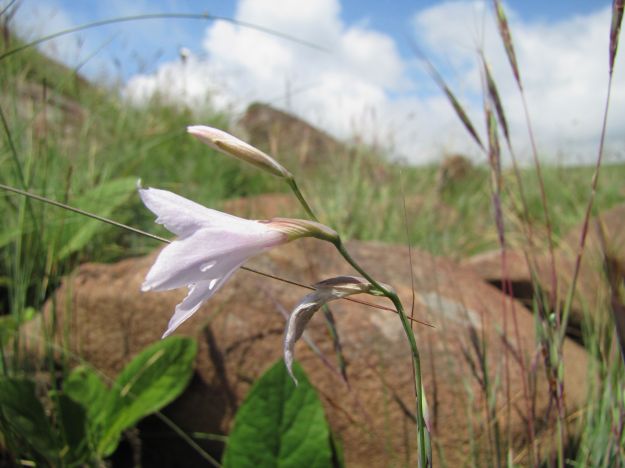 Nkanyiso spotted a rinkhals on a rock which quickly slithered into a hole nearby when all the cameras were focussed on him. Amongst the rocks we found Maytenus acuminata, Myrsine Africana, Veronia hirsute, Tulbaghia leucantha, Cineraria with soft grey leaves One of the nicest things about CREW fieldtrips is that everyone helps everyone else to learn something new.
Nkanyiso spotted a rinkhals on a rock which quickly slithered into a hole nearby when all the cameras were focussed on him. Amongst the rocks we found Maytenus acuminata, Myrsine Africana, Veronia hirsute, Tulbaghia leucantha, Cineraria with soft grey leaves One of the nicest things about CREW fieldtrips is that everyone helps everyone else to learn something new. 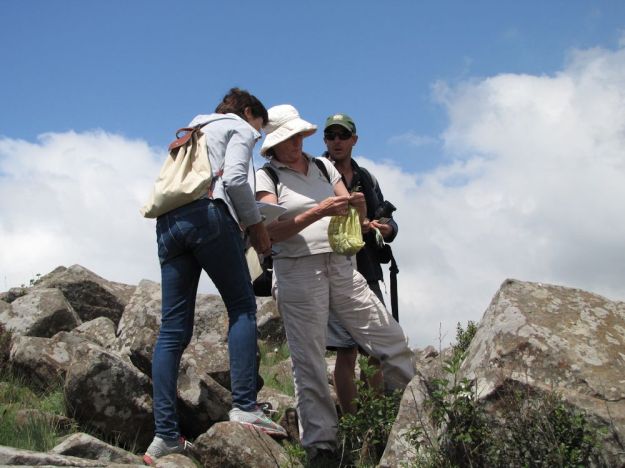 We disturbed a common quail, saw lots of Rhodohypoxis baurii – mostly white but a patch of pink near a stream, Chlorophytum cooperii, Hebenstretia dura
We disturbed a common quail, saw lots of Rhodohypoxis baurii – mostly white but a patch of pink near a stream, Chlorophytum cooperii, Hebenstretia dura  Helichrysum pilosellum, Polygala gracilenta – dark pinky purple, Aster perfoliatus with leaves that clasp the stem
Helichrysum pilosellum, Polygala gracilenta – dark pinky purple, Aster perfoliatus with leaves that clasp the stem 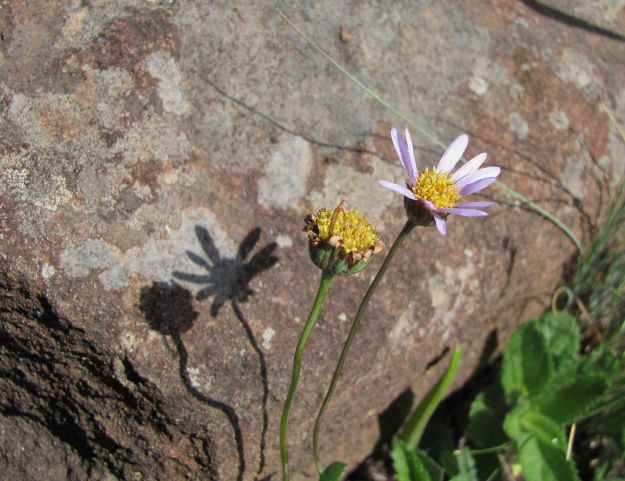 Psammotropha myriantha, Dierama florifirum (an educated guess), Osteospermum juncundi – gorgeous bright pink, Alepidea natalensis (not flowering yet), Protea simplex – new leaves sprouting from what is essentially an underground tree.
Psammotropha myriantha, Dierama florifirum (an educated guess), Osteospermum juncundi – gorgeous bright pink, Alepidea natalensis (not flowering yet), Protea simplex – new leaves sprouting from what is essentially an underground tree. 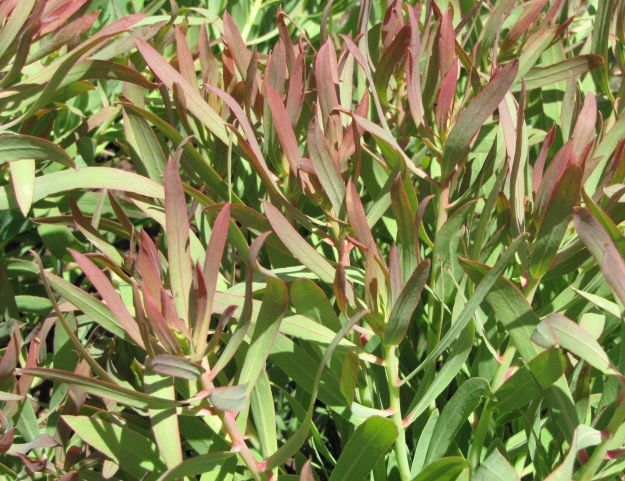 We found Thesium natalense, Xysmalobium parviflorum,
We found Thesium natalense, Xysmalobium parviflorum, 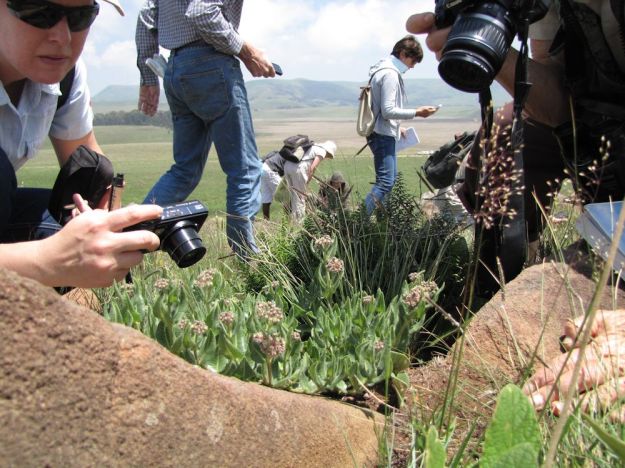 Sue spotted Eulophia aculiatum – tucked next to a rock, a very unusual find and pretty exciting
Sue spotted Eulophia aculiatum – tucked next to a rock, a very unusual find and pretty exciting 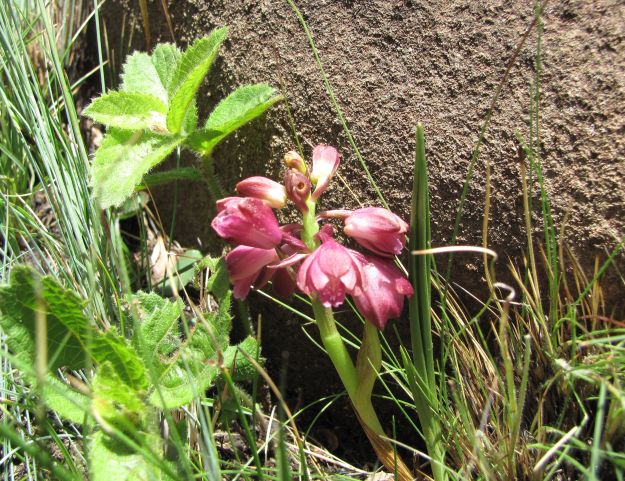 Hypoxis sp maybe argentia, Ledebouria cooperi, Ledebouria sandersonia, and Ledebouria monophylla (which is not known in this location, so pretty exciting), Gerbera piloselloides – a wonderful yellow. We sploshed across a wetland (sensible Nkanyiso wore gumboots),
Hypoxis sp maybe argentia, Ledebouria cooperi, Ledebouria sandersonia, and Ledebouria monophylla (which is not known in this location, so pretty exciting), Gerbera piloselloides – a wonderful yellow. We sploshed across a wetland (sensible Nkanyiso wore gumboots), 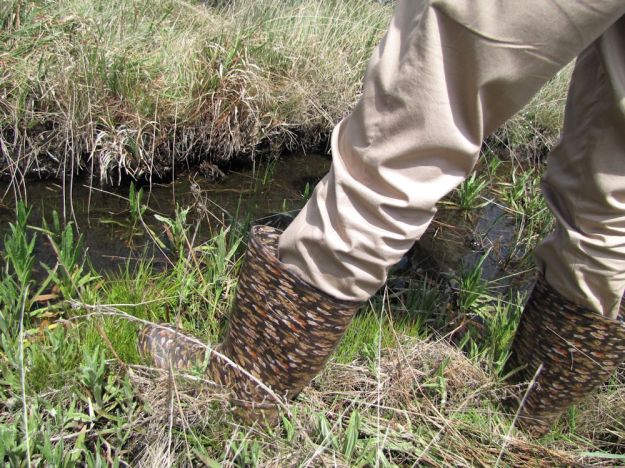 where we found Eriocaulom dregei, Aponogetom junceus, Anthericum sp and Ranunculus multifidus (Zulu name appropriately uxaphozi, which means wetland),
where we found Eriocaulom dregei, Aponogetom junceus, Anthericum sp and Ranunculus multifidus (Zulu name appropriately uxaphozi, which means wetland), 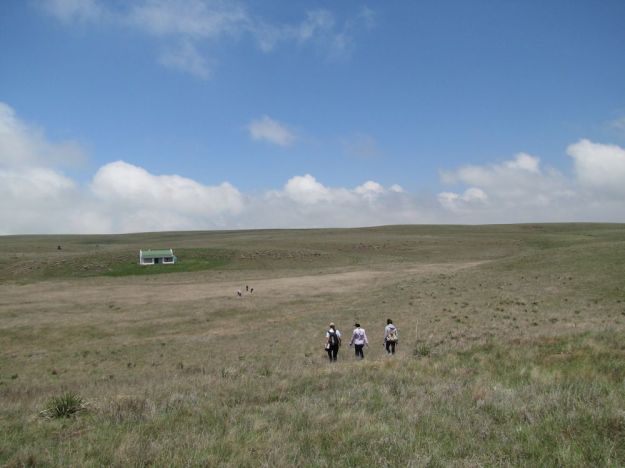 Acalypha penduncularis, Pelagonium luridum with gorgeous spidery leaves edged in red, Eucomis (not flowering yet), Coccinea hirtella,
Acalypha penduncularis, Pelagonium luridum with gorgeous spidery leaves edged in red, Eucomis (not flowering yet), Coccinea hirtella, 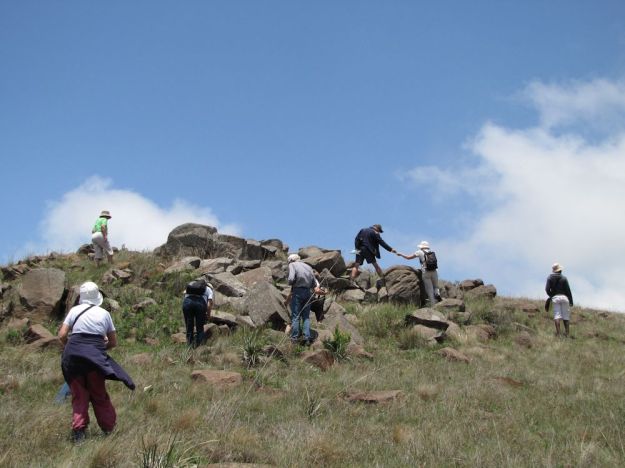 Diclis reptans, Nemesia caerulea, Watsonia – was it lepidea? Some discussion about our altitude which would help with identifying the species – we were at 1900m above sea level.
Diclis reptans, Nemesia caerulea, Watsonia – was it lepidea? Some discussion about our altitude which would help with identifying the species – we were at 1900m above sea level. 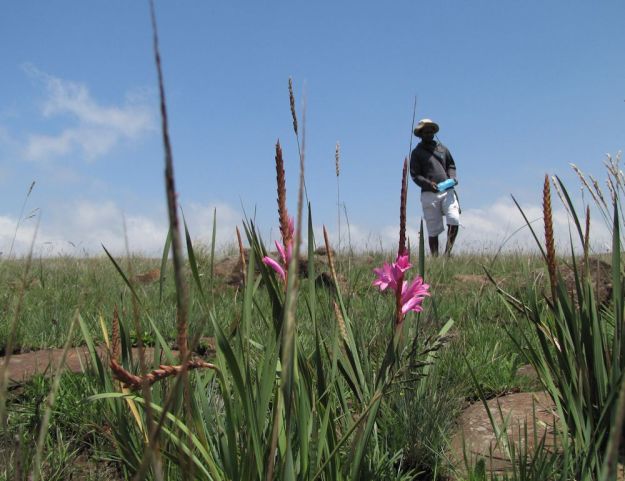 Aloe, Peucodanum caffrum, Senecio speciosa, Hirpircium armeroides with Peter announced had “fearsome bracts”,
Aloe, Peucodanum caffrum, Senecio speciosa, Hirpircium armeroides with Peter announced had “fearsome bracts”,
Drosera, Unidentified Erica – Isabel took a piece home to identify), Pentanisia prunelloides, Scilla nervosa – not flowering, Jamesbritennia breviflora, Tulbaghia natalensis. We had been puzzled by something as we crossed the wetland and hoped to find it on the way back with a few of the experts in tow. Astonishingly, Gina lead us right to it. 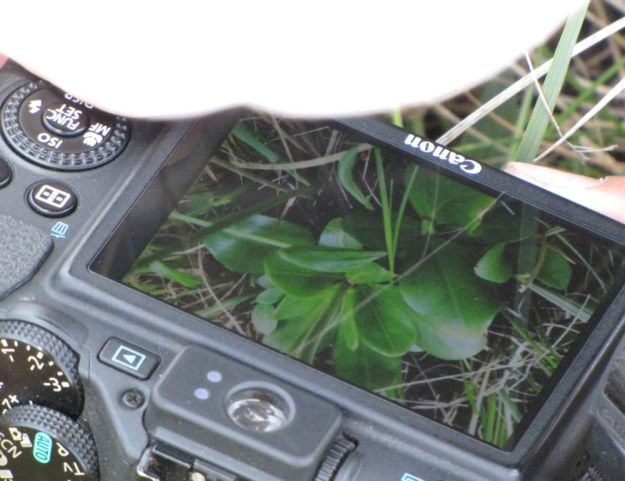 Peter guessed Veronia and Sue searched through the book until we decided on Veronia thodii. Much to our delight Isabel confirmed it and Barbara explained how it should be pronounced (a German name).
Peter guessed Veronia and Sue searched through the book until we decided on Veronia thodii. Much to our delight Isabel confirmed it and Barbara explained how it should be pronounced (a German name).
As we left Lake Lyndhurst, we spotted two secretary birds on the hillside. On the way back down we stopped to admire the fresh, clean water tumbling over the rocks, feeling sad about the state of the uMngeni river just a little further down the valley. 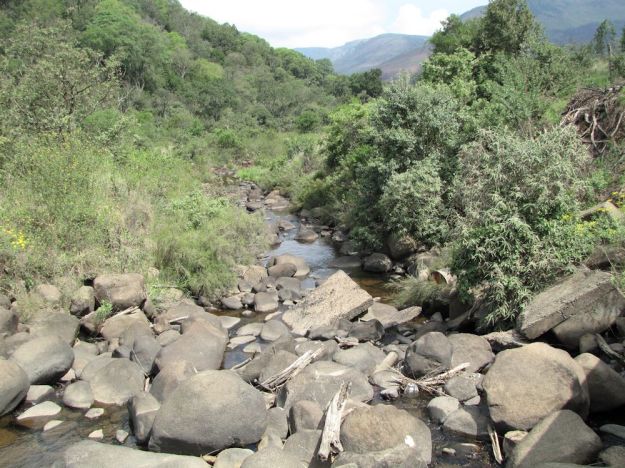 Thanks to Roy and Val Tabernor for their assistance in accessing Lake Lyndhurst. If you are keen to join CREW and help search for special plants, contact info@midlandsconservancies.org.za
Thanks to Roy and Val Tabernor for their assistance in accessing Lake Lyndhurst. If you are keen to join CREW and help search for special plants, contact info@midlandsconservancies.org.za
Peter Warren has posted some of the plants we found onto iSpot where interesting discussions have followed. Do have a look here: http://www.ispot.org.za/search/node/lake%20lyndhurst – make a comment or post some of your own observations. 